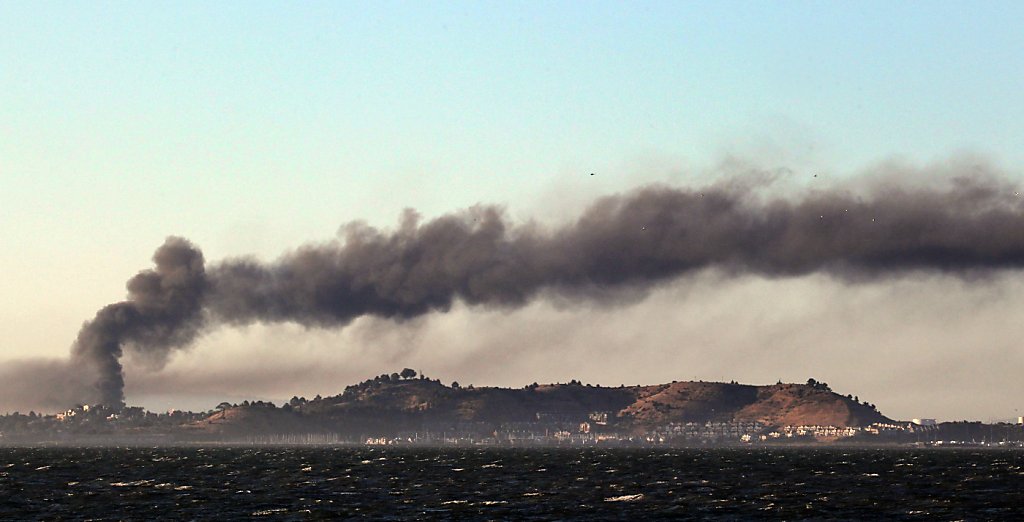Oil refinery air monitoring delay is unreasonable

Lance Iversen, The Chronicle
Black smoke spreads from Richmond's Chevron refinery after an explosion set off a fire Aug. 6.
Jay Gunkelman and Marilyn Bardet
July 29, 2013
The one-year anniversary of the Chevron Richmond refinery explosion and fire is Aug. 6. That date will also mark the 3-year-old delay in implementing the comprehensive air-monitoring system called for by an agreement with Chevron. If another refinery disaster occurred today, residents could go online to see that the real-time air-monitoring data for their community is "coming soon."
In 2010, Chevron agreed to install both fence-line and community air-monitoring stations at the perimeter and in the neighborhoods surrounding its Richmond refinery. The agreement was part of a tax settlement between the city of Richmond and Chevron. The equipment and trailers were purchased and systems assembled and readied for implementation. The community trailers still sit idle, even now, almost a year after the catastrophic crude-unit explosion, fire and obvious impacts on human health. Richmond's city manager, Bill Lindsay, says now that he regrets not including a deadline for Chevron in the 2010 agreement.
A recent Bay Area Air Quality Management District Expert Community Monitoring Advisory meeting offered some hope for the future of community monitoring at all the region's oil refineries. However, the hope for future technologies will not solve the immediate need for community-based air-monitoring systems.
The community air-monitoring stations are an integral part of a system that can track toxic gases originating from the refinery as they migrate toward the surrounding community. Without these neighborhood monitoring stations, the citizens of Richmond and the Bay Area in general are only getting fence-line monitoring, that is, half of a system.
It's time to ask the city manager if he once again regrets not giving Chevron a deadline for installing these systems; after all, Lindsay did get a letter from Chevron in November 2012 in which the refinery management committed to having all of the air monitoring stations installed and operational by the first quarter of 2013. It will be four months and a day since the city of Richmond said community air-monitoring stations will launch.
Why the stalling? Chevron could implement the system unilaterally; the city of Richmond could force the immediate operational implementation of these systems; the regional air district could require the immediate use of technologies agreed to in 2010. If Chevron generates another accidental release or other fire that impacts the community, each party holding up the installation of the community air-monitoring systems should be held accountable.
Holding up the operation of an already negotiated state-of-the-art air-monitoring program can only be seen as resulting from a lack of leadership at all levels. The community remains the victim.
We urge you to contact the Richmond city manager, Richmond City Council members, Contra Costa County Supervisor John Gioia, the Bay Area Air Quality Management District, your city, county and neighborhood leaders, anyone who can help get these currently idle systems up and running.
Chevron's crude-oil processing unit was put back into operation in April. Why wasn't the same consideration given to the air-monitoring system that benefits the community?
Jay Gunkelman is a member of the Bay Area Air Quality Management District Expert Advisory Panel on Community Monitoring. Marilyn Bardet is a member of the Benicia Good Neighbor Steering Committee.
|

